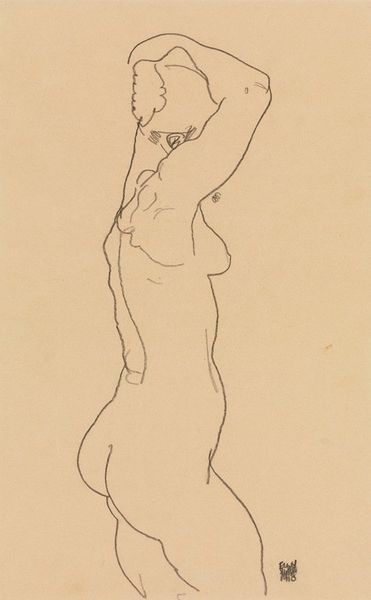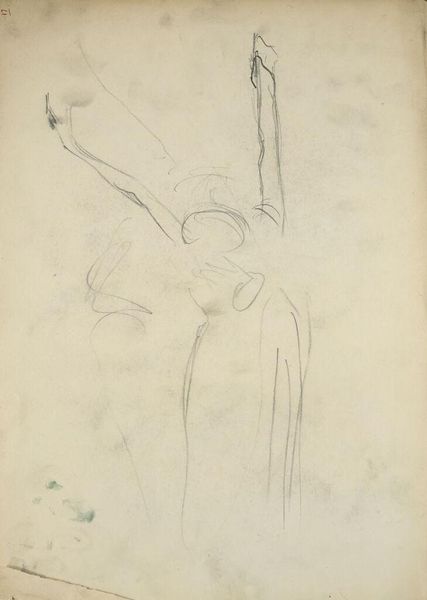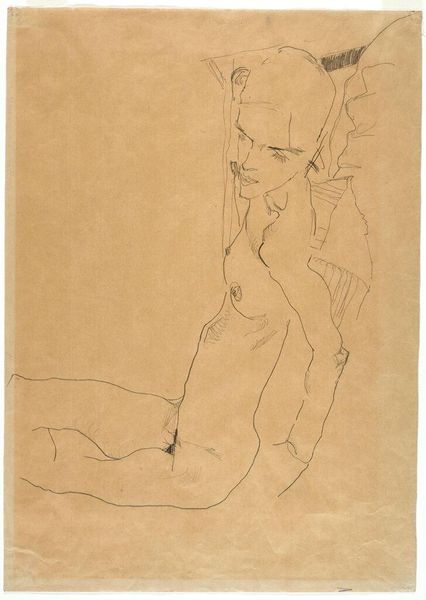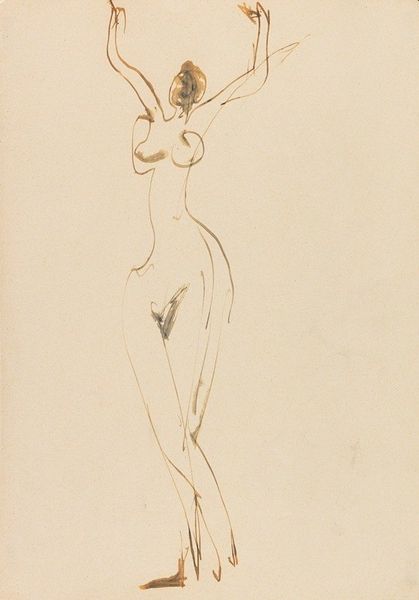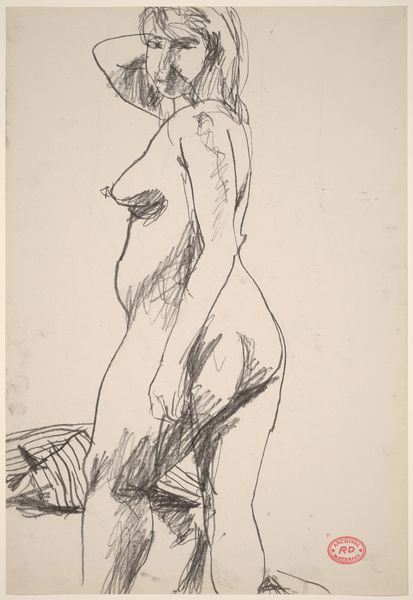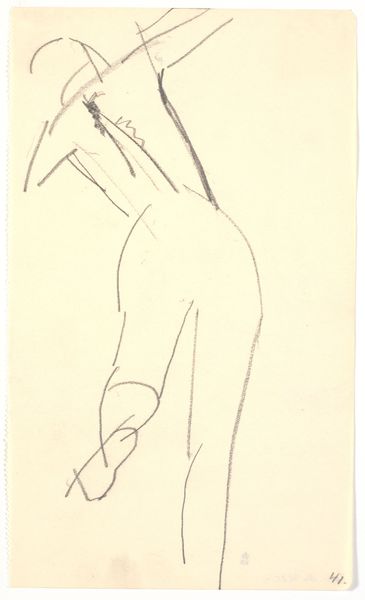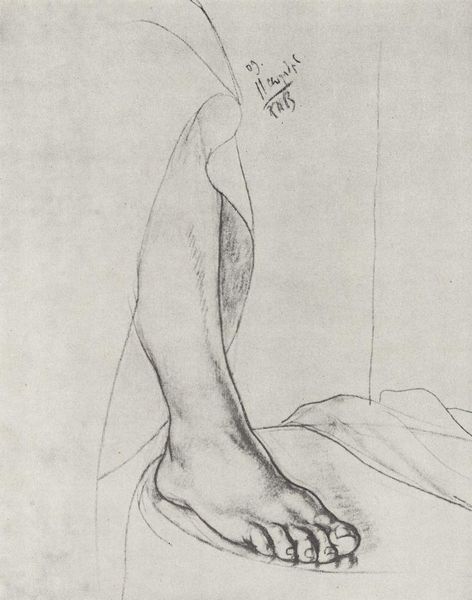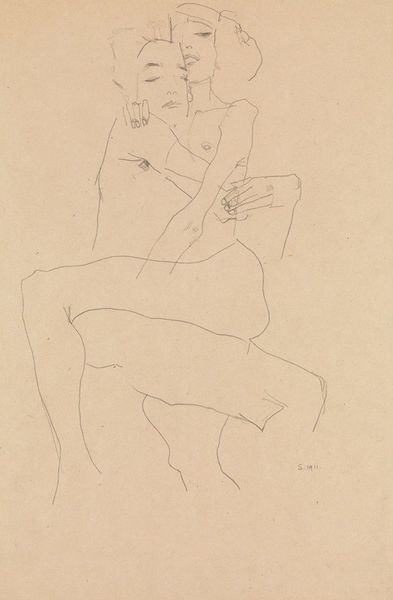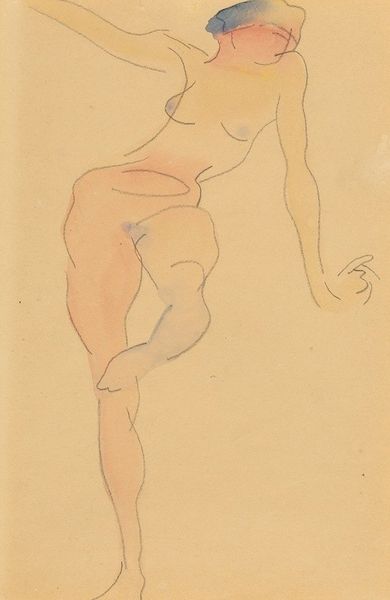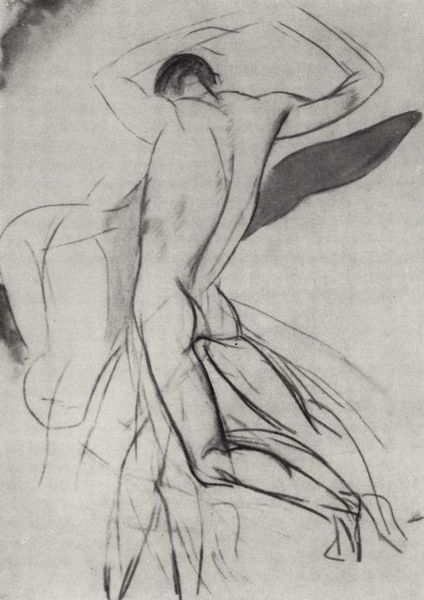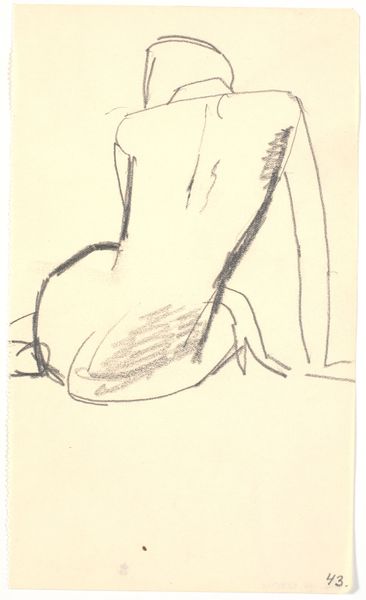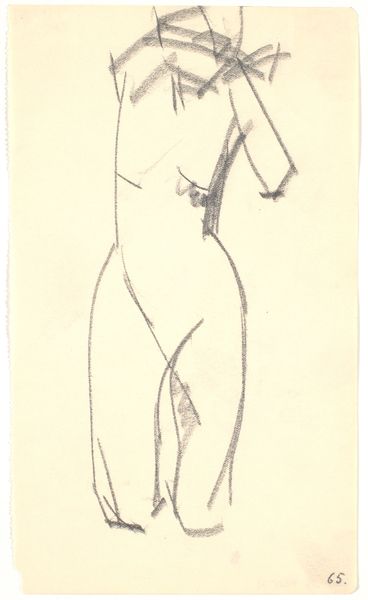
Standing Girl in a Blue Dress and Green Stockings, Back View 1913
0:00
0:00
egonschiele
Private Collection
drawing, paper, pencil
#
portrait
#
drawing
#
figuration
#
paper
#
pencil
#
expressionism
Copyright: Public domain
Curator: Here we have Egon Schiele’s "Standing Girl in a Blue Dress and Green Stockings, Back View," a pencil drawing on paper created in 1913. It's currently held in a private collection. Editor: My initial reaction is one of vulnerability, almost fragility. The delicate lines, the muted palette… it's a fleeting impression. Curator: It is fascinating to view Schiele’s portraits through the lens of power dynamics, particularly concerning gender. This work presents a young girl viewed from the back, her dress obscuring and revealing at the same time. There's a subtle tension between childhood innocence and an emerging sexuality, amplified by Schiele’s expressionistic style. The gaze is indirect, shifting the objectification, and challenging typical portraiture. Editor: Absolutely. The angularity of the limbs and clothing creates a sense of unease. Notice how the sharp, almost brittle lines of the dress contrast with the softer curves implied beneath? The colour is limited, but highly evocative: the blue, which gives depth; and the green in the stocking that anchors her in her youth. This restrained palette enhances the work's expressive impact and overall tension. Curator: Considering Vienna at the turn of the century, marked by societal strictures, it prompts inquiry. Was this a young model, and what did such an encounter mean during that epoch? It brings to light themes of adolescent experience, of gender roles within the community and a commentary of its constraints. It could be viewed as a social analysis conveyed via the expressive figure of a young girl. Editor: From a formal perspective, the composition draws attention to the deliberate use of negative space, adding an unsettling atmosphere. Her unseen face amplifies her form, while the distortion gives us insight into her mindset or a larger statement by the author of her psychological state. Curator: Indeed. Thinking about Schiele's broader body of work, marked with such raw expression, it encourages inquiry. How might a modern, gender-aware sensibility respond to and reinterpret the work today, engaging with Schiele's exploration of adolescence and the act of looking? Editor: Looking closer allows us to focus not on answers, but on new formal explorations – colour, line, form – providing just as many avenues as do broader contextual questions.
Comments
No comments
Be the first to comment and join the conversation on the ultimate creative platform.
